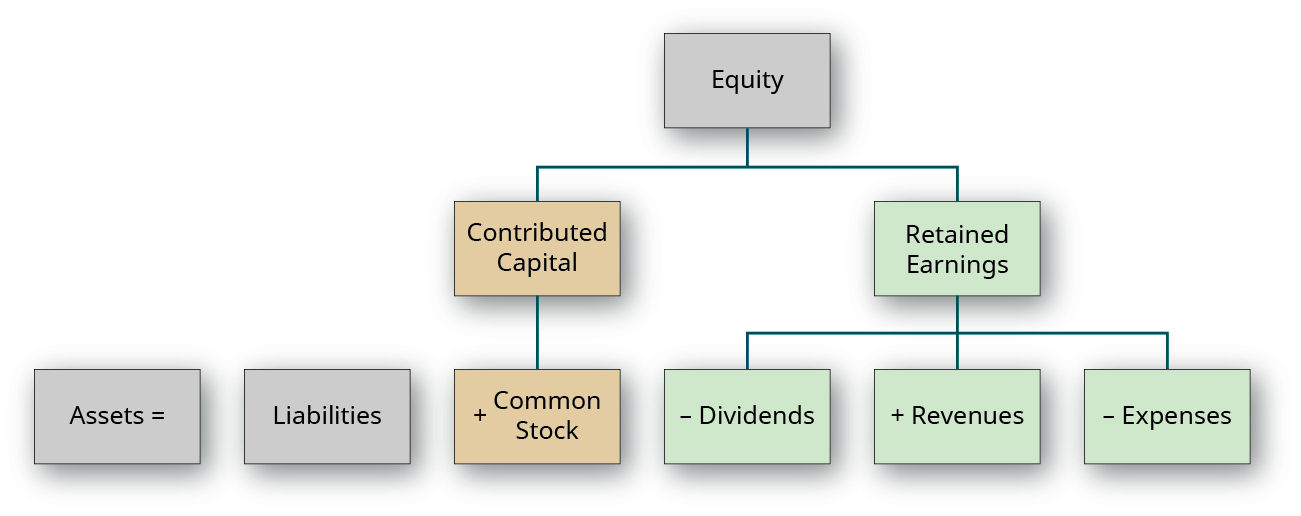39 expanded accounting equation worksheet
› accounting-basicsExpanded Accounting Equation - Examples | Concept | Explanation The expanded accounting equation also demonstrates the relationship between the balance sheet and the income statement by seeing how revenues and expenses flow through into the equity of the company. Since corporations, partnerships, and sole proprietorships are different types of entities, they have different types of owners. For instance, corporations have stockholders and paid-in capital accounts; where as, partnerships have owner’s contribution and distribution accounts. › homework-help › questions-andSolved Prepare an expanded accounting equation worksheet for ... Answer: Accounting equation (Worksheet) Event Cash + inventory + Building = Accounts payable + Notes payable + Common stock + Retained earnings - Dividend income = revenue - expense Jan 2 75,000 75,000 Jan 4 -10,000 90,000 80,000 Jan 10 4,200 4,200 J …. View the full answer.
Equation Questions and Answers ASSETS = LIABILITIES + OWNER'S EQUITY If we turn this around to make owner's equity the subject, then: OWNER'S EQUITY = ASSETS - LIABILITIES So we take the assets and minus the liabilities. In other words, $760,000 - $240,000 = $520,000 For b) we first add the changes to assets and liabilities to get their new balances.

Expanded accounting equation worksheet
› expanded-accounting-equationExpanded Accounting Equation (Definition, Examples) Expanded Accounting Equation = Paid-up Capital – Treasury Stock (if any) + Liabilities + Income – Expenses – Dividends. Stockholders Equity is the sum of the Paid-up capital of the organization reduced by Treasury stock. Treasury Stock Treasury Stock is a stock repurchased by the issuance Company from its current shareholders that remains non-retired. › introducing-the-completeExpanded Accounting Equation with Income & Expense Example Jun 25, 2022 · Assets + Expenses + Drawings = Liabilities + Revenue + Owners Equity. In tutorial 2 we learned that the left side is known as the debit side and the right side is known as the credit side. The same rules apply here, only now we have some new additions to each side. corporatefinanceinstitute.com › resources › knowledgeExpanded Accounting Equation - Overview, Formula, Examples Feb 26, 2022 · The expanded accounting equation will further break them down. Understanding the Expanded Accounting Equation. The expanded accounting equation is broken down to be: Assets = Liabilities + Share Capital + Retained Earnings Assets = Liabilities + CC + BRE + R + E + D. Where: CC = Contributed Capital; BRE = Beginning Retained Earnings; R = Revenue; E = (–) Expenses
Expanded accounting equation worksheet. › BCTutorials › BCIntroTransactions Expanded Equation - dwmbeancounter.com Transaction Analysis Using the Expanded Accounting Equation Assets = Liabilities + Owner's Equity In the previous table, we entered all the transactions that affected Owner’s Equity under one heading; namely, Owner’s Equity and disregarded whether it was a revenue, expense, or draw item. corporatefinanceinstitute.com › resources › knowledgeExpanded Accounting Equation - Overview, Formula, Examples Feb 26, 2022 · The expanded accounting equation will further break them down. Understanding the Expanded Accounting Equation. The expanded accounting equation is broken down to be: Assets = Liabilities + Share Capital + Retained Earnings Assets = Liabilities + CC + BRE + R + E + D. Where: CC = Contributed Capital; BRE = Beginning Retained Earnings; R = Revenue; E = (–) Expenses › introducing-the-completeExpanded Accounting Equation with Income & Expense Example Jun 25, 2022 · Assets + Expenses + Drawings = Liabilities + Revenue + Owners Equity. In tutorial 2 we learned that the left side is known as the debit side and the right side is known as the credit side. The same rules apply here, only now we have some new additions to each side. › expanded-accounting-equationExpanded Accounting Equation (Definition, Examples) Expanded Accounting Equation = Paid-up Capital – Treasury Stock (if any) + Liabilities + Income – Expenses – Dividends. Stockholders Equity is the sum of the Paid-up capital of the organization reduced by Treasury stock. Treasury Stock Treasury Stock is a stock repurchased by the issuance Company from its current shareholders that remains non-retired.













0 Response to "39 expanded accounting equation worksheet"
Post a Comment